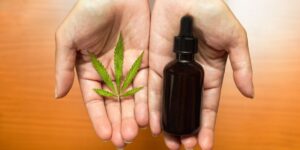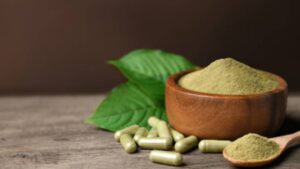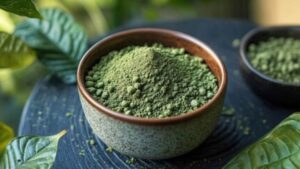As kratom’s popularity grows, questions about drug testing arise. especially the comprehensive 10-panel test, are on the rise. If you use kratom or are considering it, you’re likely wondering: Does kratom show up on a 10-panel drug test? What exactly is the 10-panel test, what substances does it look for, and how easy is it to get?
In this blog, we’ll address all of these topical clusters, using a balanced, professional tone to help inform your decisions—without making unsupported health claims.
Introduction to Kratom Drug Test
The increasing popularity of using kratom creates uncertainties about its appearance in drug tests. Standard drug testing procedures are commonplace in many companies that focus on safety alongside their operations.
Current drug screening systems check for a combination of THC, cocaine, opiates, amphetamines, and benzodiazepines. Standard drug testing does not include kratom as one of its covered screening substances.
Specified tests have been developed to detect kratom along with its broken-down products. Users who must deal with drug testing during kratom usage need detailed knowledge about test types and their detection abilities.
How does Kratom work in the Body?
The use of kratom results in compounds that attach to opioid receptors located within brain tissue, especially targeting the mu receptors along with the delta and kappa receptors.
The predominant alkaloid, mitragynine, delivers the main stimulant characteristics in kratom, but the more powerful alkaloid 7-hydroxymitragynine produces analgesic and sedative responses in the plant.
When taken, kratom travels through the body until the liver breaks it down into several metabolite components. The kidneys remove the metabolites produced from kratom metabolism, which are eliminated via urine excretion.
The rate of kratom metabolism along with urine excretion depends upon different aspects such as user age and body weight, as well as metabolic speed and personal health condition.
Types of Drug Tests and Their Detection Capabilities
Many organizations, healthcare centers, and legal institutions perform drug tests as a standard procedure. Multiple drug testing techniques have been developed to identify particular substances found in human bodily samples.
The ability to detect various substances varies between different drug testing types depending on their appropriate usage context.
1. Urine Tests
Among all drug testing methods, urine tests stand as the most prevalent type because they identify THC, together with cocaine and opiate compounds, along with amphetamines and benzodiazepines.
These tests remain popular because they require no invasive methods, are affordable, and are slow enough to detect numerous substances.
2. Blood Tests
Blood tests are more invasive than urine tests, but they provide more accurate drug test results. Their ability to identify substances within the bloodstream shortly after use enables their use in determining current impairment.
3. Saliva Tests
The popularity of saliva tests continues to increase because of their convenient application methods as well as their non-discriminatory testing nature. Drug detection through these tests reveals drug usage only from recent hours to days, based on the substance type.
4. Hair Tests
Hair tests maintain the widest detection capabilities because they can detect drug usage from 90 days up to long periods. The risk of hair testing remains low because of its costly nature and its complex sampling techniques.
5. Breath Tests
People use breath tests to detect the presence of alcohol in their breath as their primary purpose. Workplaces and law enforcement departments use these tests for fast responses in detecting drugs.
What Is a 10-Panel Test?
A 10-panel drug test is a common tool used by employers, legal professionals, and healthcare providers to screen for the presence of multiple substances, both prescription and illicit, in a person’s system.
Typically, this test analyzes a urine sample (though sometimes blood, saliva, or hair is used) to detect metabolites from ten designated substance categories.
When and where are 10-panel tests used?
- Pre-employment screenings
- Random/periodic workplace checks
- Legal or probation requirements
- Substance abuse treatment programs
- Sports/athletic competition screening
What distinguishes a 10-panel from a basic 5-panel test is its broader scope, covering more substance categories, and providing a wider window into potential drug use or misuse.
How to Get a 10-Panel Test?
Anyone can access a 10-panel drug test—either through a clinic, online order, or select at-home testing kits.
Process:
- Choose a facility (local lab, workplace testing site, hospital, or online provider)
- Register online or in person; pay the test fee (prices vary by provider)
- Get instructions or a barcode for registration
- Provide a urine sample (sometimes blood/hair/saliva, per requirements)
- Await lab results (from same-day in rapid tests to several days for lab-based tests)
You usually don’t need a prescription or doctor’s note, though medical or legal testing may require professional oversight. At-home versions exist but are generally less accurate; most employment or legal testing will require a lab-confirmed result.
Substance 10-Panel Test Detects
A standard 10-panel drug test screens for the following ten substances:
| Substance | Examples Detected |
| Amphetamines | Methamphetamine, speed, ADHD stimulants |
| Methamphetamines | Meth, ecstasy |
| THC/Cannabinoids | Marijuana, hash, THC oil |
| Cocaine | Powder, crack, free-base |
| Opiates | Heroin, morphine, codeine |
| Phencyclidine | Angel dust |
| Barbiturates | Phenobarbital, butalbital, secobarbital |
| Benzodiazepines | Diazepam (Valium), alprazolam (Xanax) |
| Methadone | Prescription opiate |
| Propoxyphene | Prescription painkiller |
Does Kratom Show Up on Drug Tests?
When conducting standard drug screening, the test selectively screens for THC alongside cocaine, and opiates alongside amphetamines and benzodiazepines.
Standard drug screens do not check for Kratom among their listed substances; thus, standard drug tests usually cannot detect it. However, there are some considerations to keep in mind:
- Specificity of Tests: Test procedures for standard drug detection identify particular metabolites that exist in well-known abused substances. Standard drug test panels contain no kratom or its metabolites; thus, these substances escape detection.
- Workplace Policies: Some workplaces extend their drug screening methods with extra chemicals beyond their standard testing panels. Specialized testing protocols must be employed to detect kratom when an employer tests specifically for this substance.
- Cross-Reactivity: Very infrequently, the compounds contained in kratom products might produce incorrect positive results for standard drug test analyses.
Specialized Tests for Kratom Detection
These tests are more targeted and require specific analytical techniques.
1. Immunoassay Tests
Technologists can develop immunoassay-based tests that detect the kratom metabolites mitragynine and 7-hydroxymitragynine. The tests incorporate antibodies that react to metabolites in the sample, thus confirming their presence.
2. Liquid Chromatography-Mass Spectrometry
Both instruments serve the specific purpose of detecting kratom metabolites accurately. This technique serves as an efficient method for finding low substance concentrations in multiple testing materials.
3. Gas Chromatography-Mass Spectrometry
GC-MS functions as an extremely precise and responsive technique for confirming individual substances in testing environments. Instrumentation can accurately detect kratom metabolites and measure their concentration levels to a precise standard needed for specific laboratory testing.
Factors Influencing Kratom Detection in Drug Tests
Below are some of the most important factors that may cause kratom to appear as a substance that causes a positive drug test. These factors include:
1. Test sensitivity
While most routine drug screenings do not directly detect kratom’s alkaloid profile, high levels of kratom or its metabolites may result in positive reactions to other opioids, including methadone.
2. Quality of ingested kratom
Kratom can be purchased as a dietary supplement; thus, the quality of the product varies.
3. Metabolism
Each person’s metabolism is unique, determining how the substance will be metabolized and eliminated from the body. Based on how quickly kratom alkaloids are metabolized and cleared from the body, we understand how they may or may not show up on drug tests.
4. Dosage
Increasing kratom consumption often broadens the detection window.
5. Frequency of Use
Regular kratom use might result in prolonged detection times.
How Long Does Kratom Stay in Your System?
Detection of kratom in your body depends on multiple factors, including the amount you take, how often you consume it, your personal metabolic rate, and what kratom product you choose to use.
Under normal conditions, the two main kratom compounds, mitragynine and 7-hydroxymitragynine, stay active in the body for 7 to 9 hours. Individual differences create major impacts on the time necessary for detecting kratom in the body.
Urine testing of kratom detects the substance for periods ranging from 5 to 7 days for infrequent users. The detection period increases in regular kratom users because their bodies store kratom metabolites.
Blood tests identify kratom usage for only short periods, extending to a few days since the last consumption, whereas kratom detection is less prevalent for these tests.
Saliva tests can identify kratom immediately, followed by blood tests that process kratom within 24 hours, but hair tests have a lower chance of success in detecting kratom use because they examine hair for up to 90 days.
Final Thoughts
A 10-panel test is a comprehensive, widely used drug screening method, but it does not routinely detect kratom. Only specialized or add-on panels can identify kratom’s unique alkaloids, and these are seldom part of employer, legal, or athletic testing by default.
For most individuals, kratom use should not affect the result of a standard 10-panel drug test, though anyone in high-compliance fields or special circumstances should consult their testing provider.
Understanding these details can help you make informed choices about kratom and navigate testing with confidence—focusing on compliance, safety, and your personal goals.
Also Read:







